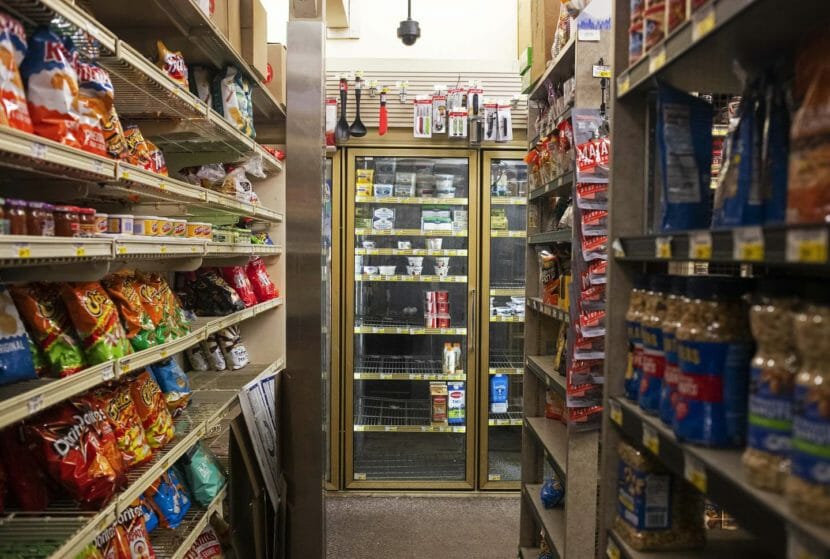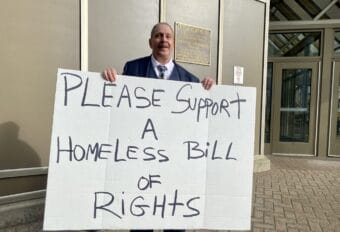
Tens of thousands of Alaskans will lose access to expanded food stamp benefits in September after the state ends its public health emergency in July.
The end of certain additional benefits under the federal Supplemental Nutrition Assistance Program comes as food aid groups say need is reaching previous pandemic highs while prices are soaring. Plus, other pandemic-era benefits, like the child tax credit and rental assistance, are expiring too, said Cara Durr, director of public engagement at the Food Bank of Alaska.
“We know families are struggling and they are turning to services,” Durr said. “So this is really coming in the middle of what is kind of a perfect storm.”
The SNAP Emergency Allotment program, which has been in place throughout the pandemic, is set to end in Alaska after August. It will mean the loss of at least $95 in benefits per month for the 56,000 households in Alaska that receive food stamps. But some families could be losing hundreds of dollars more each month, at a time when roughly 13% of Alaskans are receiving benefits from SNAP.
The additional benefits will cease because the state of Alaska opted to end its public health emergency in July. For the money to be sent, both a federal and state-level order need to be in place.
A state spokesman said the emergency declaration was specific to COVID-19, and was not related to today’s economic challenges. The order was initially a way to respond to the pandemic, but is no longer needed since the private sector is providing much of that response now, he said.
The emergency allotment program gives people already receiving SNAP benefits the maximum amount for their household each month, Durr said. Benefits are calculated based on someone’s income and expenses, which means someone with more income would usually get lower benefits.
But under the emergency allotments, a single person in Anchorage who might normally receive the minimum of $26 per month could receive the maximum amount of benefits for their household, which is $322 per month, she said.
People who were already receiving their maximum benefit were able to receive an additional $95 each month beginning in July 2021 under the emergency allotment, Durr said.
“It’s been a really important boost for households,” she said.
SNAP benefits are available to some low-income families and come on debit cards issued to recipients so they can purchase food. While the benefits may not fully cover a month’s worth of food for families, they’re still an important resource, Durr said.
All told, some 97,000 Alaskans, among 56,000 households, were receiving SNAP benefits in April and are set to lose some amount of benefits come September.
That’s around 17,000 more people who received the benefit compared to January 2020, and is a number that’s been steadily rising since January 2021, according to data from the state’s health department.
At a press conference earlier this month, Shawnda O’Brien, director of the Division of Public Assistance, told reporters that the department will give notice to people receiving the additional money that the benefit will end.
According to a spokesperson for the U.S. Department of Agriculture, 16 states around the country have ended their emergency or disaster declarations while another four have said they will end theirs. States can extend the emergency SNAP benefits by a month after their emergency declarations end — which Alaska opted to do in order to send the benefits out through August once the order ends in July. The benefits will also extend a month after the federal emergency ends, according to the USDA.
For the states continuing their public health emergencies, the federal Department of Health and Human Services has said it will give a 60-day notice of when it plans to end the federal public health emergency, which by late June, it had not yet done — meaning the earliest the emergency could end would be late August, and the benefits for those states would continue through September.
The end of the emergency allotments will be “devastating” for people who rely on SNAP, predicted Heather Parker. She is a supervising attorney in Southeast Alaska with Alaska Legal Services, a nonprofit that provides free civil legal services to low-income Alaskans.
Parker said local food banks can be a stopgap measure for those who need food. She’s also told clients that to qualify for the maximum amount of food stamp benefits, they should make sure the Division of Public Assistance is aware of all expenses. But all in all, she said, there’s not a great safety net for people.
Leigh Dickey, advocacy director for Alaska Legal Services, noted that the federal dollars to pay the benefit still exist.
“By DHSS ending the state emergency, they’re basically just ending Alaskans’ access to the federal money earlier than they need to, which does seem cruel right now,” Dickey said.
An earlier disaster declaration that had been in place since March 2020 expired in February 2021, after Gov. Mike Dunleavy said the Legislature was the body that should renew it and it failed to do so. The current public health emergency set to end in July has been in place since May 2021.
In an emailed response, health department spokesman Clinton Bennett said that the emergency order was only possible under limited authorities given to the state’s health commissioner by the Legislature to help with the pandemic response.
The state public health emergency “is specific to COVID-19 and has nothing to do with the current economic situation,” Bennett wrote. “The tools provided for the COVID-19 response are no longer required, so it is appropriate to end the State Public Health Emergency Order.”



